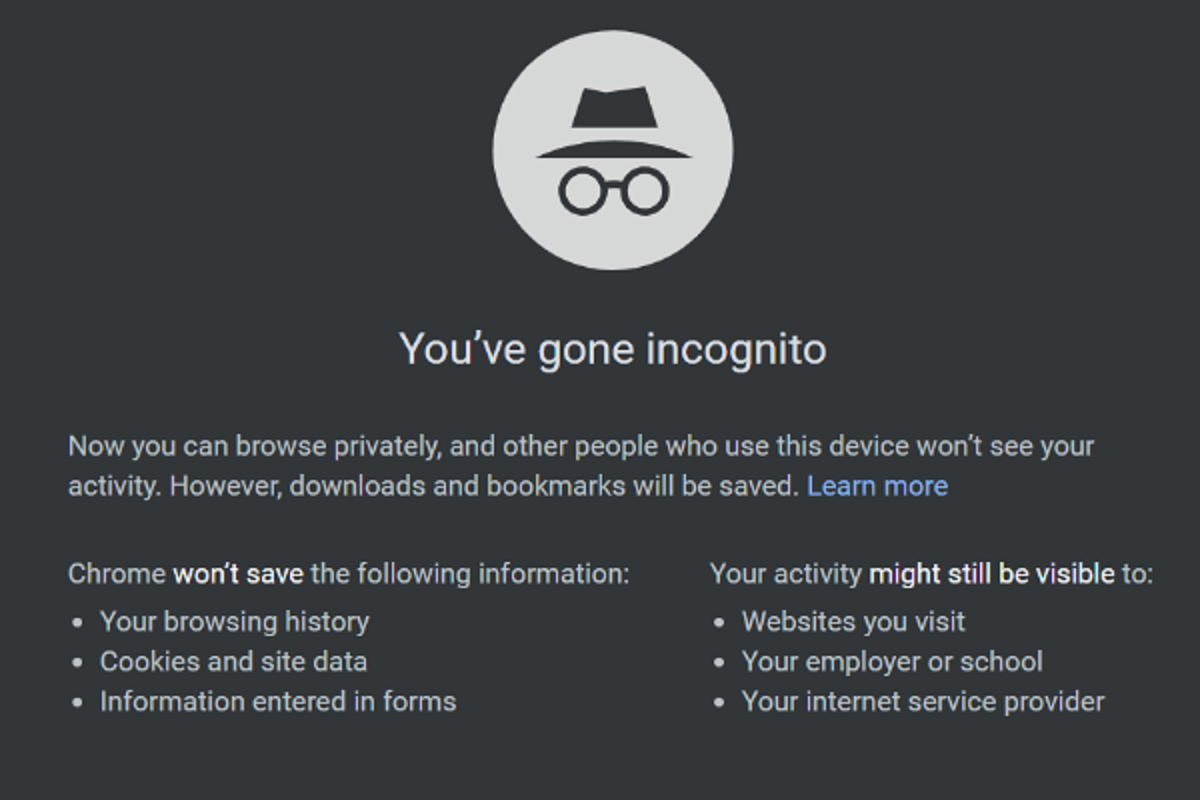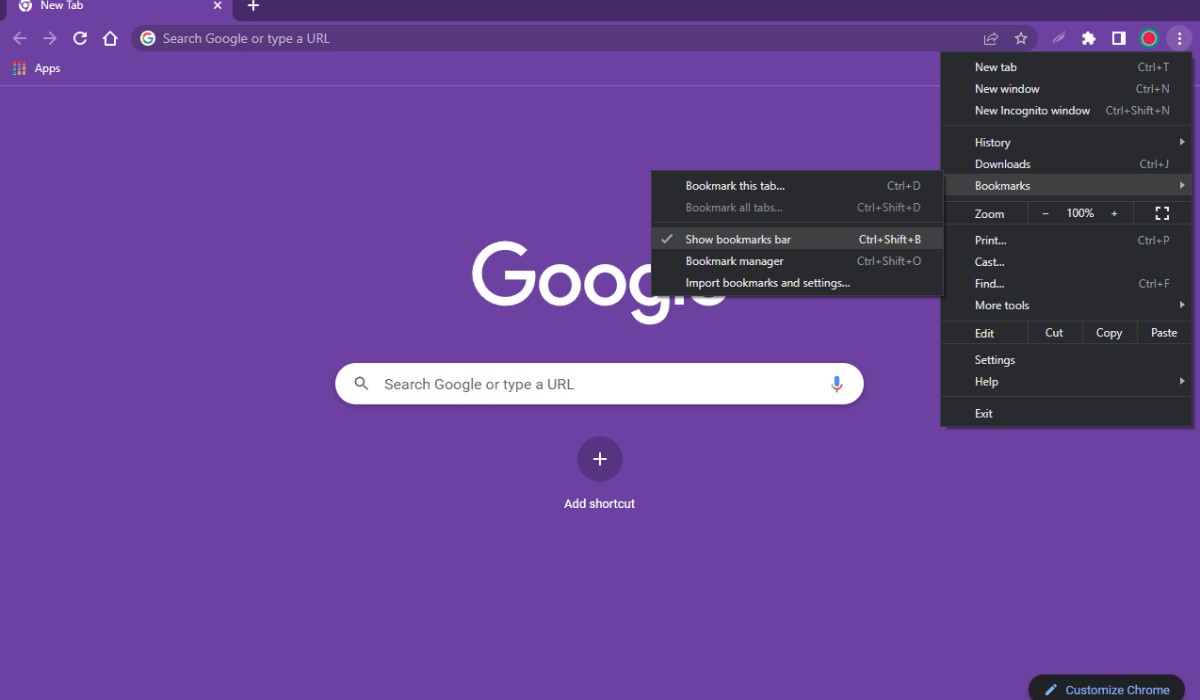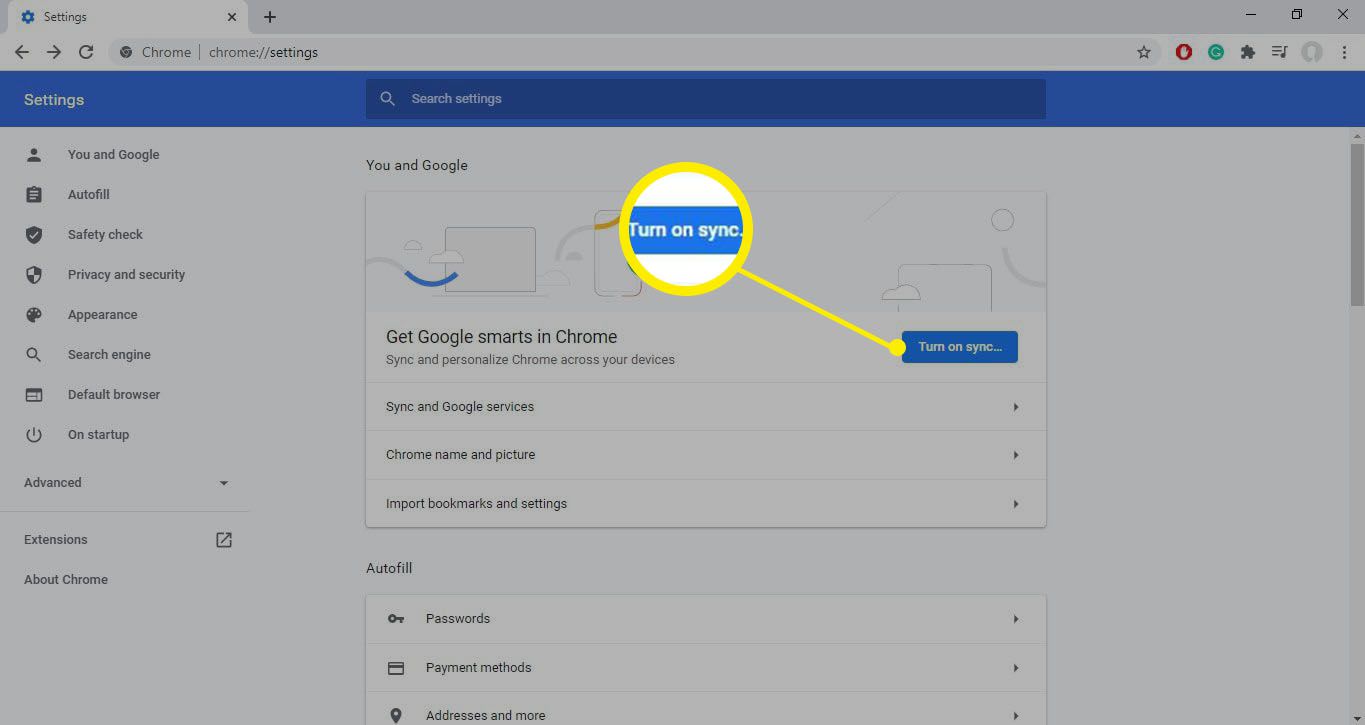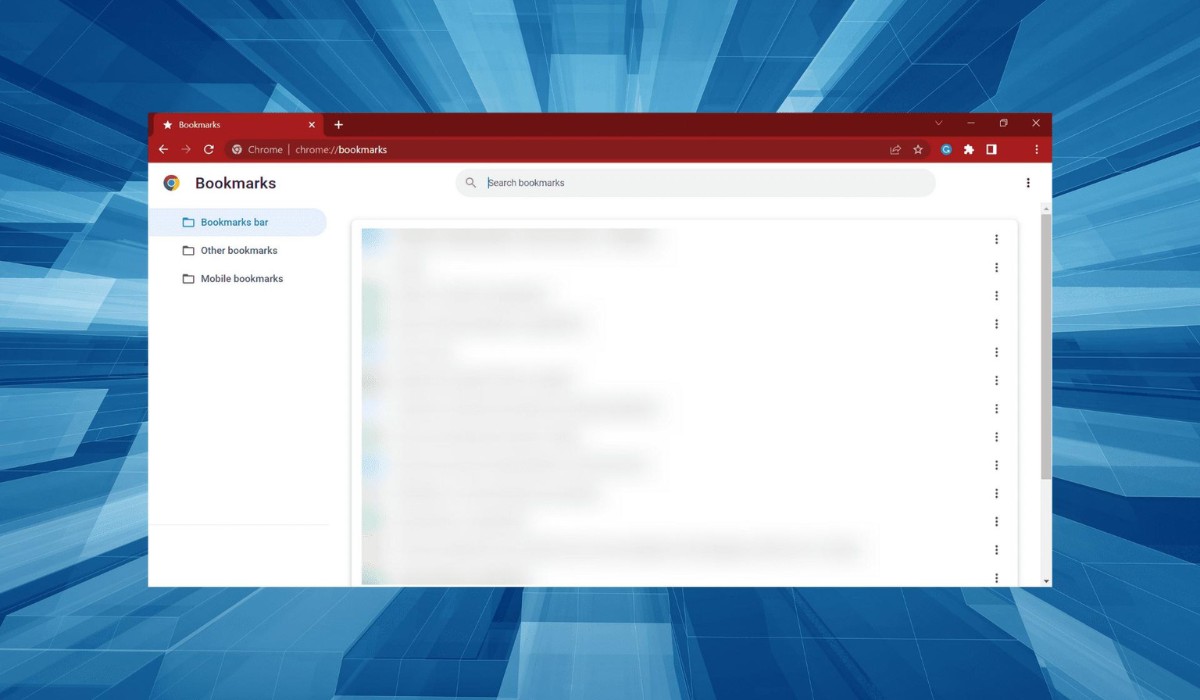Introduction
The bookmarks bar in Google Chrome is a convenient feature that allows quick access to your favorite websites and web applications. However, there are times when you may prefer a clutter-free browsing experience or wish to maximize the screen space for viewing web content. In such cases, turning off the bookmarks bar can be a practical solution.
Whether you're looking to temporarily hide the bookmarks bar to focus on a specific task or seeking a more streamlined browser interface, Chrome offers several methods to accomplish this. From utilizing the browser settings to employing keyboard shortcuts and context menu options, you have the flexibility to customize your browsing environment according to your preferences.
In this article, we will explore three effective methods to turn off the bookmarks bar in Chrome. By following these step-by-step instructions, you can seamlessly toggle the visibility of the bookmarks bar based on your current browsing needs. Whether you're a seasoned Chrome user or just getting started with the browser, these methods are designed to provide you with the flexibility and control to tailor your browsing experience to your liking.
Now, let's delve into each method to discover how you can easily manage the bookmarks bar in Chrome and optimize your browsing environment for enhanced productivity and focus.
Method 1: Using the Chrome Settings
The Chrome Settings menu offers a straightforward way to manage the visibility of the bookmarks bar. By accessing the browser's settings, you can easily toggle the display of the bookmarks bar on or off, providing you with the flexibility to customize your browsing experience.
To begin, open Google Chrome on your computer. In the top-right corner of the browser window, you will find the three-dot menu icon. Click on this icon to reveal a dropdown menu, then navigate to the "Settings" option and click on it.
Once you are in the Settings menu, scroll down to find the "Appearance" section. Within this section, you will see the "Show bookmarks bar" option. By default, this option is enabled, indicating that the bookmarks bar is visible. To turn off the bookmarks bar, simply click on the toggle switch next to "Show bookmarks bar" to disable it. As a result, the bookmarks bar will no longer be displayed in the browser interface.
Conversely, if you wish to re-enable the bookmarks bar at any time, you can follow the same steps and click on the toggle switch to turn it back on. This seamless process allows you to effortlessly customize the appearance of the bookmarks bar based on your current browsing preferences.
By utilizing the Chrome Settings to manage the bookmarks bar, you can easily adapt the browser interface to suit your specific needs. Whether you prefer a minimalist browsing environment or require quick access to your bookmarks, the flexibility offered by Chrome's settings empowers you to tailor your browsing experience according to your preferences.
In addition to turning off the bookmarks bar, the Chrome Settings menu provides a wealth of customization options, allowing you to personalize various aspects of the browser to create a tailored and efficient browsing environment. From theme selection to font customization and advanced settings, Chrome's intuitive interface puts you in control of your browsing experience.
In the next section, we will explore another convenient method to turn off the bookmarks bar in Chrome using keyboard shortcuts, providing you with an alternative way to manage the visibility of the bookmarks bar with ease.
Method 2: Using Keyboard Shortcuts
In addition to utilizing the Chrome Settings menu, you can efficiently manage the visibility of the bookmarks bar in Google Chrome by leveraging convenient keyboard shortcuts. These shortcuts provide a quick and seamless way to toggle the display of the bookmarks bar, offering an alternative method to customize your browsing environment with ease.
To begin, open Google Chrome on your computer. Whether you are navigating through multiple tabs or immersed in a web page, the keyboard shortcuts for toggling the bookmarks bar can be accessed without disrupting your browsing flow.
The keyboard shortcut to turn off the bookmarks bar in Chrome is as follows:
- For Windows and Linux users: Press
Ctrl + Shift + B - For Mac users: Press
Command + Shift + B
By pressing the designated keyboard shortcut based on your operating system, you can instantly hide the bookmarks bar from view, providing you with a clutter-free browsing interface. This streamlined approach allows you to seamlessly transition between displaying and hiding the bookmarks bar, catering to your specific browsing needs at any given moment.
Conversely, if you wish to bring back the bookmarks bar, simply press the same keyboard shortcut again to toggle its visibility. This intuitive process empowers you to effortlessly manage the appearance of the bookmarks bar without interrupting your browsing activities, enhancing your overall browsing experience.
The utilization of keyboard shortcuts in Chrome extends beyond managing the bookmarks bar, offering a range of efficient commands to navigate the browser interface and perform various tasks with ease. By familiarizing yourself with these shortcuts, you can streamline your browsing workflow and optimize your productivity while using Google Chrome.
In the subsequent section, we will delve into another practical method to turn off the bookmarks bar in Chrome by utilizing the Bookmarks Bar context menu, providing you with additional flexibility in customizing your browsing environment.
Method 3: Using the Bookmarks Bar Context Menu
In Google Chrome, the Bookmarks Bar context menu offers a convenient and intuitive method to manage the visibility of the bookmarks bar. By leveraging this context menu, you can seamlessly toggle the display of the bookmarks bar, providing you with an additional option to customize your browsing environment based on your specific preferences.
To initiate this method, open Google Chrome on your computer. Once the browser is open, navigate to the bookmarks bar located just below the address bar. The bookmarks bar typically displays your saved bookmarks and provides quick access to your favorite websites and web applications.
To turn off the bookmarks bar using the context menu, follow these simple steps:
-
Right-click on an empty space within the bookmarks bar. This action will prompt a context menu to appear, presenting you with a range of options related to managing your bookmarks and the bookmarks bar itself.
-
Within the context menu, you will find the "Show bookmarks bar" option, accompanied by a checkmark indicating its current visibility status. If the bookmarks bar is currently displayed, the "Show bookmarks bar" option will be checked.
-
To hide the bookmarks bar, simply click on the "Show bookmarks bar" option within the context menu. Upon clicking, the checkmark will disappear, indicating that the bookmarks bar is now hidden from view.
By following these straightforward steps, you can effortlessly turn off the bookmarks bar in Google Chrome using the Bookmarks Bar context menu. This method provides a seamless and visually intuitive way to manage the visibility of the bookmarks bar, allowing you to customize your browsing interface with ease.
Conversely, if you wish to bring back the bookmarks bar, you can follow the same steps and click on the "Show bookmarks bar" option within the context menu. This straightforward process empowers you to conveniently toggle the visibility of the bookmarks bar based on your current browsing needs.
The Bookmarks Bar context menu in Chrome offers a range of additional options to organize and manage your bookmarks effectively. From creating new bookmarks to organizing existing ones and customizing the bookmarks bar, this context menu provides a user-friendly interface to streamline your bookmark management tasks.
By utilizing the Bookmarks Bar context menu to turn off the bookmarks bar, you can seamlessly customize your browsing environment, ensuring that it aligns with your specific preferences and enhances your overall browsing experience.
In the subsequent sections, we will summarize the methods discussed and provide a comprehensive overview of the various options available to manage the bookmarks bar in Google Chrome.
Conclusion
In conclusion, the ability to turn off the bookmarks bar in Google Chrome provides users with a valuable means of customizing their browsing experience to suit their specific needs and preferences. By exploring the three methods outlined in this article, users can seamlessly toggle the visibility of the bookmarks bar, ensuring a clutter-free interface when desired and quick access to bookmarks when needed.
The Chrome Settings menu offers a user-friendly approach to managing the bookmarks bar, allowing users to enable or disable its display with a simple toggle switch. This method provides a convenient way to customize the browser interface, catering to individual preferences for a streamlined or feature-rich browsing environment.
Furthermore, the utilization of keyboard shortcuts presents an efficient and seamless way to toggle the bookmarks bar's visibility without disrupting the browsing flow. By leveraging these shortcuts, users can effortlessly switch between displaying and hiding the bookmarks bar, enhancing their browsing experience with minimal effort.
Additionally, the Bookmarks Bar context menu provides an intuitive method to manage the bookmarks bar's visibility, offering users a visually engaging way to customize their browsing environment. This context menu empowers users to conveniently hide or display the bookmarks bar based on their immediate browsing requirements, further enhancing the flexibility and user control within the Chrome browser.
Overall, the flexibility and accessibility of these methods underscore Chrome's commitment to providing a user-centric browsing experience. Whether users seek a minimalist interface for focused tasks or quick access to their favorite websites and web applications, the ability to turn off the bookmarks bar in Chrome reflects the browser's adaptability to diverse user preferences.
By understanding and utilizing these methods, users can effectively tailor their browsing environment, optimizing productivity and focus while enjoying the seamless functionality and intuitive interface offered by Google Chrome. As technology continues to evolve, the ability to customize the browsing experience according to individual preferences remains a key aspect of enhancing user satisfaction and engagement in the digital realm.

























